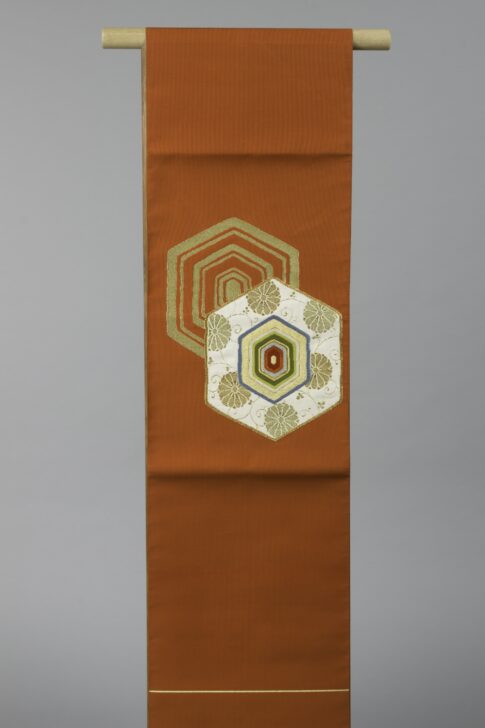Obi
Japanese

Description
Subject Matter:
This is a fukuro obi in otaiko gara.
Fukuro Obi is double-layered single-sided obi in which two separately woven surfaces and back pieces of cloth are stitched together. This type of obi is typically only worn at weddings or other formal occasions.
Gara refers to the orientation, arrangement, and surface area of the patterns and pertains to a specific trend and obi tying style. The patterning in the Otaiko gara type is minimal. A few concentrated spots of patterned motif lie on the obi while the rest is left blank. This style was invented during the Edo period (1615-1868) by the female entertainers in Fukugawa, an entertainment district in present-day Tokyo.
Tsuzure-ori, one of the Nishijin textile weave techniques, also known as nail weaving, is a type of tapestry weave that differs from regular loom weaving. Instead of using punch cards as a regular jacquard loom does, tsuzure is woven completely by hand. The design is first laid out on paper, which is used as a guide below the warp. Because the weft is significantly thicker than the warp in this type of textile, the design is visible in the weft and the warp remains unseen. In addition, there are small spaces visible between each thread as the weft does not pass through the entire fabric.
Physical Description:
Scarlet fukuro (single-sided) obi with interwoven tsuzure-ori white, gold, and green hexagonal, chrysanthemum, and karakusa motifs.
Usage Rights:
If you are interested in using an image for a publication, please visit https://umma.umich.edu/request-image/ for more information and to fill out the online Image Rights and Reproductions Request Form.